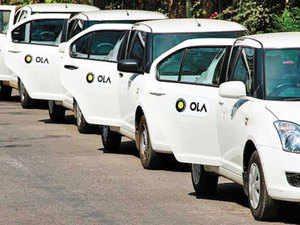
For consumers, this gets reflected in far longer wait times — from an average 2-4 minutes two years back to 12-15 minutes now — and higher fares, around 15-20% in non-peak hours in major cities.
Ola and Uber India did not comment on ride numbers.
“While our core mobility categories continue to grow, we have further strengthened our offerings with deeper penetration of first and last mile categories like Ola Autos and Ola Bikes which are now present in over a 100 cities across the country. We are also on track to achieving Mission Electric — our commitment to put a million electric vehicles on the road by 2021 that will help drive sustainable mobility, for India and the world,” an Ola spokesperson said in a statement.
“Our rides business continues to show encouraging growth across India and South Asia. We believe that the future of transport is shared, multi-modal and electric,” an Uber spokesperson said in a statement.
Savage cuts in driver incentives leading to supply shortage of cabbies is the prime reason for this low single-digit growth in a business that had seen growth of 20% in 2018, 57% in 2017 and 90% in 2016 (all data is for Ola and Uber India).
“The market is facing a saturation for point-to-point cab-hailing,” said Jaspal Singh, cofounder, Valoriser Consultants, a transportation sector focused consultancy.
Falling commercial vehicle registrations too confirm the slow crawl in Ola and Uber India’s business. For example, in Maharashtra, 66,683 tourist cabs, which largely work with Ola and Uber India, were registered in 2017-18, but the number fell to only 24,386 in 2018-19, according to the state transport department website.
Driver incentives were cut by 40% over the past one year. This resulted in several cab drivers defaulting on their loan payments.

They abandoned vehicles sourced through the Ola and Uber leasing programme and went back to jobs they held before registering with the ride-hailing companies, experts say.
Bengaluru has seen 25-30% drop in supply of active drivers, according to a top government official. “Ride prices have increased by at least 15-20% during non-peak hours across cities,” said Neil Shah, Partner & Research Director, Counterpoint Research.
Both Ola and Uber are betting on other businesses to grow. “Ola is betting big on electric mobility for two-wheeler and three-wheeler segments to bring in affordability along with pushing self-drive two-wheeler segment through its bet on Vogo. It is also ramping up its self-drive and rental verticals even as it expands internationally and makes inroads into financial services,” said a top executive at Ola, requesting anonymity.
The Bhavish Aggarwal and Ankit Bhati-founded company has separately raised more than Rs 400 crore from Tiger Global, Matrix Partners, and Ratan Tata for its Ola Electric business.
Its American rival Uber, which recently went public, has been under investor scrutiny for piling up losses globally. In India, which is one of the strategic growth markets for the company, it is now looking at its food delivery platform UberEats, corporate and rental businesses and bike rentals.
Uber’s CEO Dara Khosrowshahi has acknowledged slowing growth in Uber’s core ride-hailing business and said this will account for less than 50% of Uber’s business transactions in the near future.
“With Uber and Lyft IPOs and losses under market scrutiny, there is pressure on both Ola and Uber India to become more cautious on their cash burn and explore sustainable modes of business,” said an investor in a ride-hailing firm.











 Get Unlimited Access to The Economic Times
Get Unlimited Access to The Economic Times
